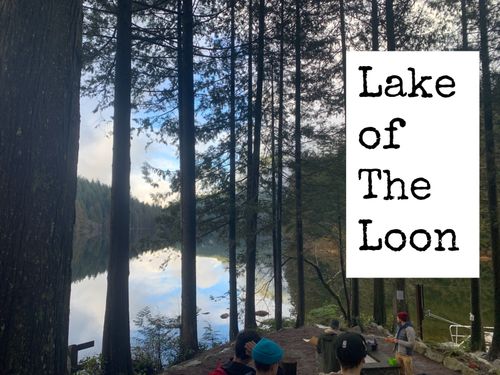Now this post is going to be a bit different than my other posts. Yes, this is a reflection post, but this time it is not reflecting on a project that we did at school. The PLP 8s and 9s went away on a learning advance!
A Brief Explanation
So you may be wondering why I am referring to this trip as an advance, and that is because PLP never retreats! Hahaha lmao yeah its basically just a trip away with my class. We went to Loon Lake Lodge in maple ridge from the 14th-17th of February. We took all of the PLP 8s and 9s so I suppose that was maybe about 50+ kids. I was not super excited to go away on this trip just because I was worried that it was going to rain and be miserable but it didn’t end up raining much and was actually quite fun. So without further adieu, lets get into the day to day.
Day 1

Above is the day schedule for our first day at Loon lake. We arrived at school at the normal time in the morning to start our Book (I’ll talk about that later) and get all of our stuff on the luggage bus and ready to go. Then we departed for the long drive over to maple ridge at lunch and the adventure began. We did a nice little trail walk and scavenger hunt activity to help us get to know the area. Then we were assigned our rooms and I was happily surprised to see that I had my bestie Dana as my room buddy. Then the evening moved on and we went to sleep.
Day 2 started bright and early with most of us feeling very tired. The food was good and we were ready to start our morning work block. We worked on our “Believe in Good” project, the personal bank account, and our book. Yes I will talk about this infamous book later in this post.Lunch was followed by an outdoor shelter building activity and some time to work on out DI stuff. We then had dinner and evening fun. After a full day of activities we were quite ready to go to bed.
Day 3
Yet again I woke up feeling not very well rested. It was pretty much the same as day 2 but the outdoor activities were battle archery and forest laser tag. I was incredibly cowardly during battle archery because I did not like the skill-intense confrontational aspect of it. I think that being too cautious is a common theme throughout my life already so it was funny to see it appear here as-well. However I was a god at forest laser tag and really enjoyed that. Laser tag is something that I have always loved and the way that they set up the laser tag with different guns and stuff just made it that much cooler. I ended day 3 early after dinner and just decompressed in my room for the rest of the evening.
Day 4
Day 4 was the last day up at loon lake and I woke up quite well rested because off the early time off I took on the night of day 3. We did our last outdoor activity as capture the flag and then after lunch we set sail for Seycove.
The Book
Now time to explain this “book” that I have been mentioning throughout this post. This book had sections where we would fill out certain prompts each day that we were there. We would work on this book a lot during advisory group time and most of us ended up having to finish the book at home later. I would highly suggest looking through this book because it is a great reflection of my time at look lake.
Conclusion
Overall this was a fun trip and I think I learned more about how I approach taking risks. Thank you for reading and I hope you enjoyed my book!
As Always, Brooke.





























